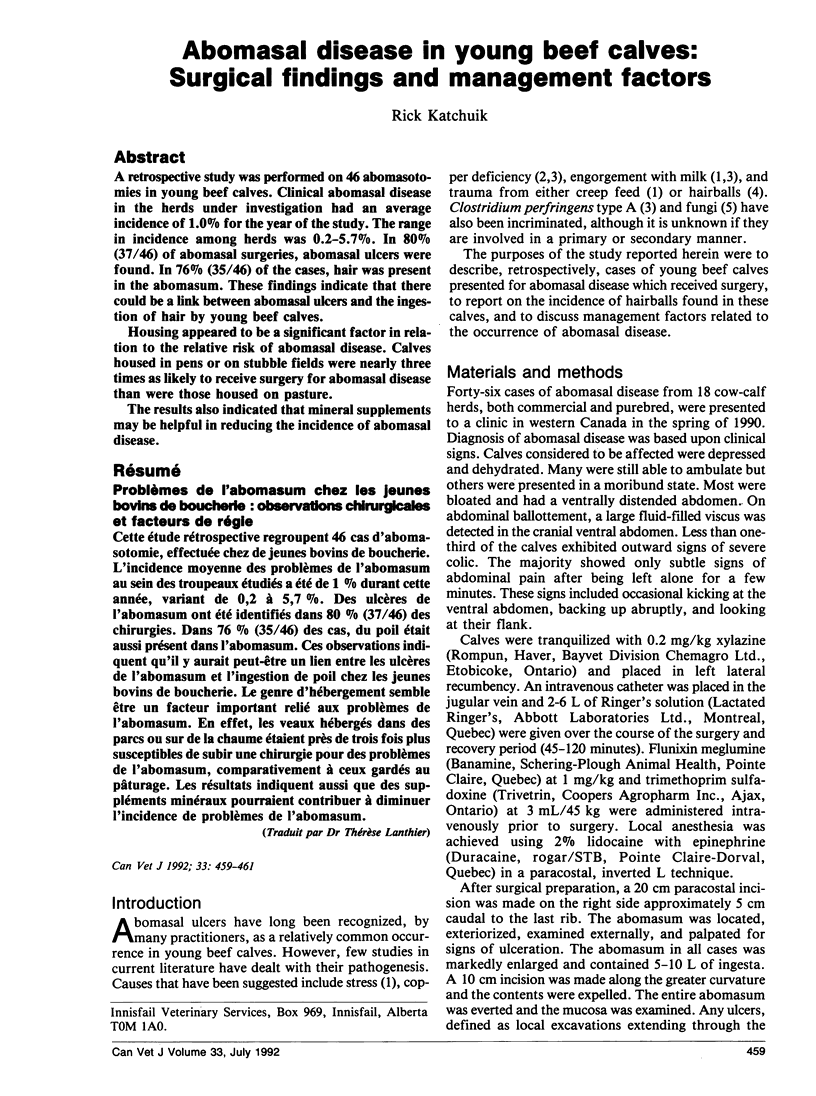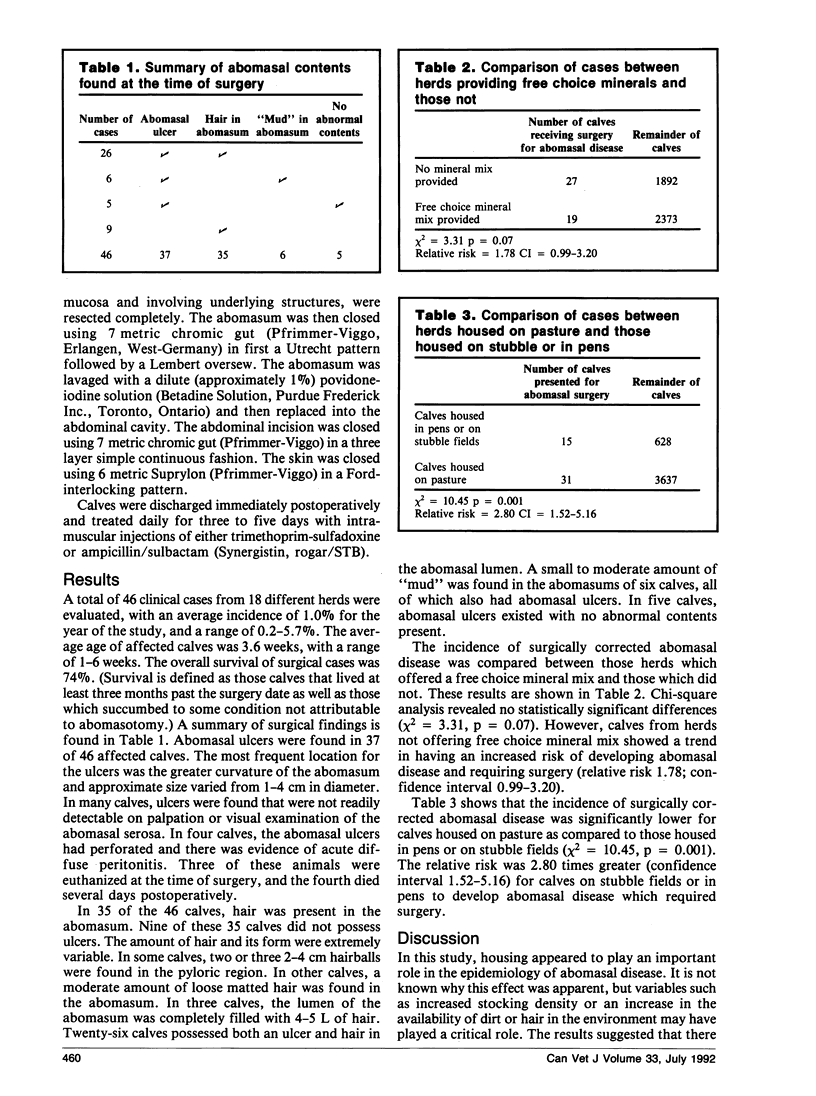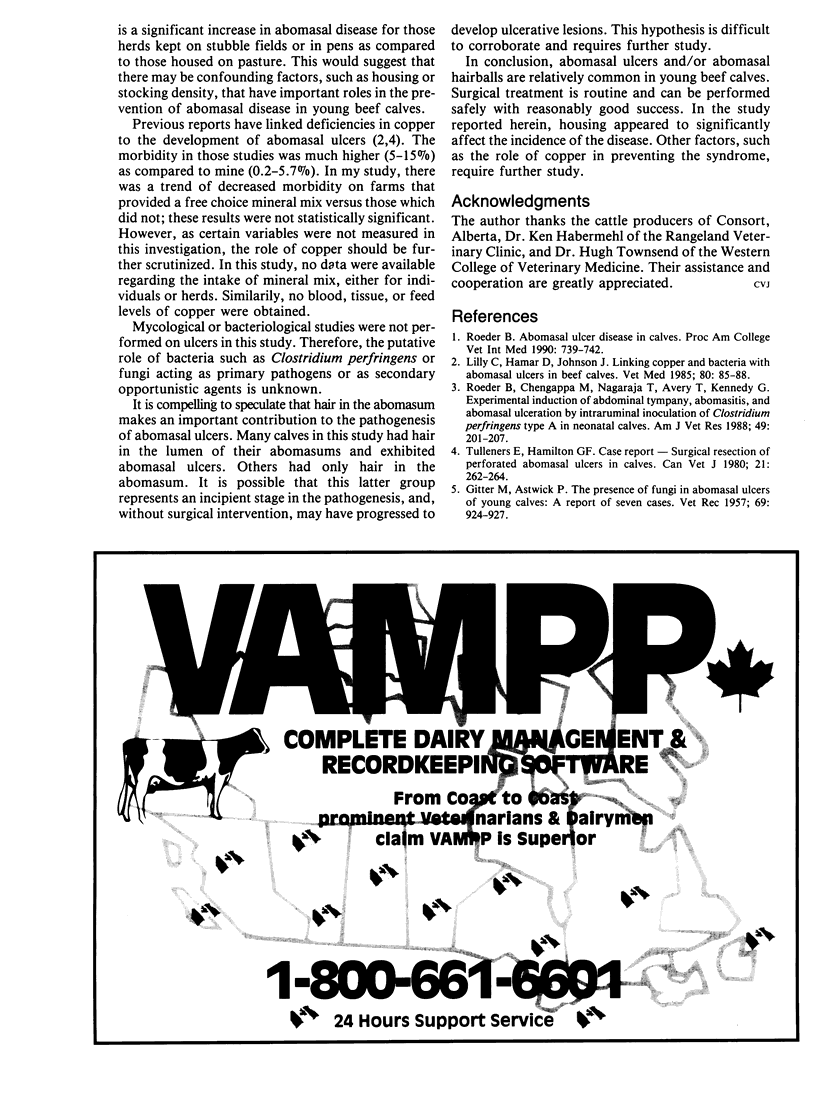Abstract
A retrospective study was performed on 46 abomasotomies in young beef calves. Clinical abomasal disease in the herds under investigation had an average incidence of 1.0% for the year of the study. The range in incidence among herds was 0.2-5.7%. In 80% (37/46) of abomasal surgeries, abomasal ulcers were found. In 76% (35/46) of the cases, hair was present in the abomasum. These findings indicate that there could be a link between abomasal ulcers and the ingestion of hair by young beef calves.
Housing appeared to be a significant factor in relation to the relative risk of abomasal disease. Calves housed in pens or on stubble fields were nearly three times as likely to receive surgery for abomasal disease than were those housed on pasture.
The results also indicated that mineral supplements may be helpful in reducing the incidence of abomasal disease.
Full text
PDF


Selected References
These references are in PubMed. This may not be the complete list of references from this article.
- Johnson D. E. Investor-owned chains continue expansion, 1985 survey shows. Mod Healthc. 1985 Jun 7;15(12):75-9, 82-5, 88-90. [PubMed] [Google Scholar]
- Roeder B. L., Chengappa M. M., Nagaraja T. G., Avery T. B., Kennedy G. A. Experimental induction of abdominal tympany, abomasitis, and abomasal ulceration by intraruminal inoculation of Clostridium perfringens type A in neonatal calves. Am J Vet Res. 1988 Feb;49(2):201–207. [PubMed] [Google Scholar]
- Tulleners E. P., Hamilton G. F. Surgical resection of perforated abomasal ulcers in calves. Can Vet J. 1980 Sep;21(9):262–264. [PMC free article] [PubMed] [Google Scholar]


